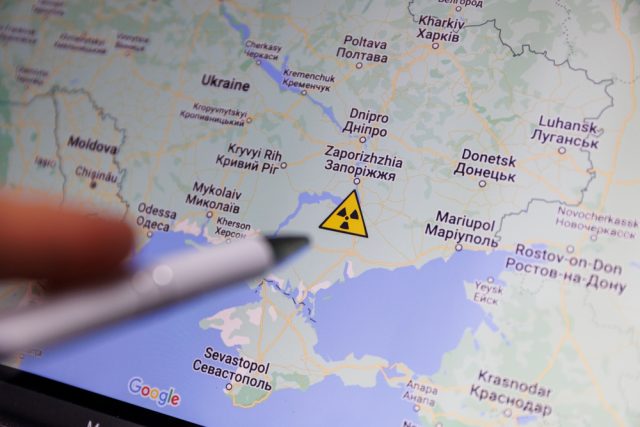
Recent raids on Zaporizhzhia, Europe’s largest nuclear power plant in Ukraine, have raised serious concerns about nuclear safety, attracting international attention and alarm from the International Atomic Energy Agency (IAEA). The attacks, allegedly carried out by drones, targeted the plant’s infrastructure, raising fears of a possible nuclear accident. Although no immediate damage to the reactors or release of radioactivity has been reported, the situation remains tense and the IAEA has urged all parties involved to avoid actions that could compromise the safety of the plant.
On the night of Monday 8 April 2024, attacks by Russian troops in the southern Ukrainian region of Zaporizhzhya resulted in the deaths of three people, according to social media posts by the region’s governor, Ivan Federov. Federov also said that in addition to the deaths, three people were injured in the Pologivskyi district of Zaporizhzhia. Rafael Grossi, Director General of the International Atomic Energy Agency, expressed grave concern, saying that the ‘irresponsible attacks’ on the Zaporizhzhia nuclear power plant posed a high risk of a serious nuclear accident and stressed the urgency of stopping such actions immediately.
The IAEA expressed its concern about the risks of a serious nuclear accident and stressed the vital importance of maintaining the safety and security of the plant. This warning follows an increase in attacks in the region, which has seen an escalation of the conflict. The agency requested immediate access to the plant to assess the situation first hand and take the necessary safety measures.
The Zaporizhzhia plant, which plays a vital role in Ukraine’s energy supply, has been at the centre of security concerns since the beginning of the conflict. Its geographical location in a disputed area exposes it to significant risks in the event of a further escalation of hostilities. The international community has followed developments with concern, calling for the avoidance of any action that could compromise the security of the facility and, by extension, public health and the environment.
These events highlight the dangers that nuclear facilities in conflict zones can face and raise questions about the management of nuclear safety in unstable geopolitical contexts. As the authorities work to ensure the safety of the plant and the IAEA continues to monitor the situation, the international community awaits further developments in the hope that diplomacy will prevail to prevent a nuclear catastrophe.
The Zaporizhzhia plant, the largest in Europe and the ninth largest in the world, has six reactors, each with a capacity of 950 MW, for a total of 5,700 MW (or 5.7 GW rated thermal). This capacity is enough to power about 4 million households. By comparison, the Chernobyl plant in the northern part of Ukraine had about a third less capacity at 3,800 MW. Interestingly, one megawatt (equivalent to one million watts) is the amount of energy needed to power 10,000 100-watt light bulbs.
The Zaporizhzhia reactors, equipped with robust containment chambers designed to withstand severe impacts, are an improved Soviet version of the pressurised water reactor (PWR), which is considered much safer than the model that suffered the Chernobyl accident in 1986. These reactors use a cooling system in which radioactive water circulates in a circuit separate from the one that transfers steam energy to the turbines.
Any malfunction in the cooling system could lead to catastrophic consequences similar to Fukushima caused by a natural event. Similarly, an accidental bombardment of the cooling pools housing the spent fuel rods, or human error – not unlikely given the high pressure being exerted on the personnel currently guarded by armed troops – could result in widespread radioactive contamination. Given the enormous capacity of the Zaporizhzhya plant, a nuclear accident at this site could have far more serious consequences than at Chernobyl and Fukushima.



 Subscribe
Subscribe